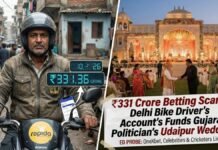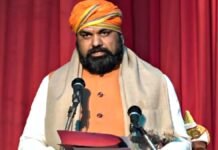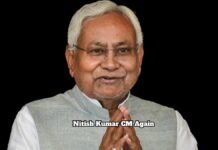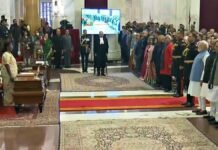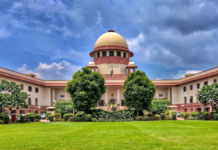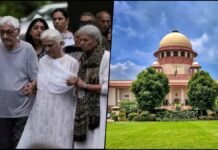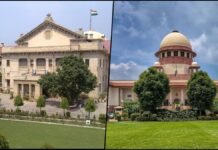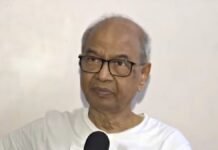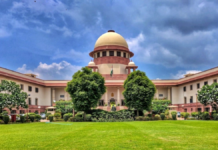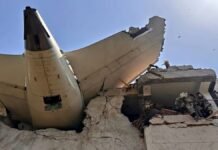
Key Highlights:
- PIL Filed in Supreme Court: Seeks detailed report on the stampede, disciplinary action against officials, and national guidelines for mass gatherings.
- Death Toll: 30 killed, over 60 injured in the Mauni Amavasya stampede at Prayagraj’s Maha Kumbh.
- Judicial Probe Ordered: UP CM Yogi Adityanath cancels Delhi trip, initiates inquiry led by ex-Justice Harsh Kumar; separate police investigation underway.
- Massive Pilgrim Turnout: 7.64 crore devotees bathed on Mauni Amavasya, 19.94 crore total since January 13.
- Continuation of Rituals: Akhadas delayed holy dip to 2:30 PM post-stampede; devotees continued thronging Sangam despite the tragedy.
New Delhi/Prayagraj: The deadly stampede at the Maha Kumbh Mela, which claimed 30 lives and left over 60 injured during the sacred Mauni Amavasya bath, has now reached the Supreme Court, with a Public Interest Litigation (PIL) demanding accountability and systemic reforms to prevent future disasters.
PIL Demands Transparency and Action
The plea, filed by activist Ankit Sharma, urges the court to:
- Direct the UP government to submit a detailed incident report.
- Take disciplinary action against officials responsible for crowd mismanagement.
- Establish nationwide safety protocols for large-scale events.
“This tragedy was preventable. Authorities ignored basic crowd control measures,” argued Sharma’s counsel, citing similar incidents at past Kumbh Melas.
Government Response: Judicial Probe and Political Repercussions
CM Yogi Adityanath canceled his Delhi election campaign to address the crisis, announcing:
- Judicial Inquiry: Headed by retired Allahabad High Court Judge Harsh Kumar, with ex-DGP V.K. Gupta and retired IAS officer D.K. Singh as members.
- Parallel Police Probe: To identify lapses in security and barricading.
- Compensation: ₹10 lakh each for victims’ families, free treatment for injured.
Critics, however, question the delay in acknowledging the stampede, with the government remaining silent until evening. “Why were families left in the dark for hours?” asked opposition leader Akhilesh Yadav.
Eyewitness Accounts: “A Wave of People Crushing Us”
Priya Verma, a survivor from Varanasi, recounted:
“We were pushed toward Sangam Nose. Barricades collapsed, and people fell like dominoes. My child was swept away—I found her hours later, injured but alive.”
Rahul Tiwari, a volunteer, added:
“The crowd overflowed beyond holding areas. By 8 PM, Sangam was packed. No exits worked—it was a death trap.”
Behind the Chaos: Systemic Failures
- Ignored Holding Zones: 84 designated crowd-control areas went unused.
- Pontoon Bridges Closed: 13 of 30 bridges blocked, forcing pilgrims into congested routes.
- Delayed CISF Deployment: Forces arrived late, worsening rescue efforts.
Maha Kumbh by the Numbers
- Mauni Amavasya: 7.64 crore pilgrims bathed, including 10 lakh Kalpvasis (ascetics).
- Total Footprint: 19.94 crore devotees since January 13—equivalent to Australia’s population.
- Contrast in Imagery: Helicopters showered flowers on pilgrims hours after the stampede, highlighting the mela’s blend of devotion and disarray.
Broader Implications: Can India Safeguard Its Mega Pilgrimages?
The stampede echoes past tragedies:
- 2013 Allahabad Kumbh: 36 deaths in a similar stampede.
- 2005 Maharashtra Stampede: 340 killed during Nashik Kumbh.
“India must adopt tech-driven crowd management, like AI surveillance and decentralized exits,” urged disaster management expert Dr. Neha Kapoor.
Conclusion: Faith Amid Fragility
As the Maha Kumbh continues until February 26, the stampede underscores the fragile balance between spiritual fervor and administrative preparedness. With the Supreme Court’s intervention and mounting public anger, the Yogi government faces a pivotal test: restoring trust while ensuring the mela’s sacred legacy endures.
Next Steps: Judicial inquiry report expected in 60 days; Supreme Court hearing slated for February 15.

